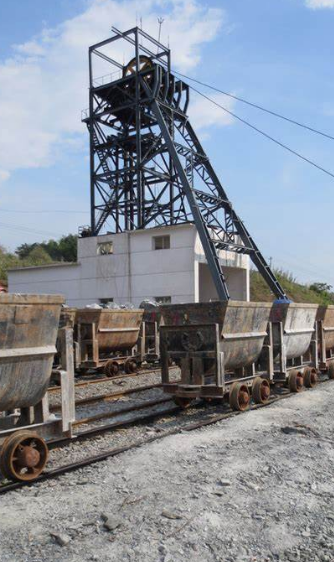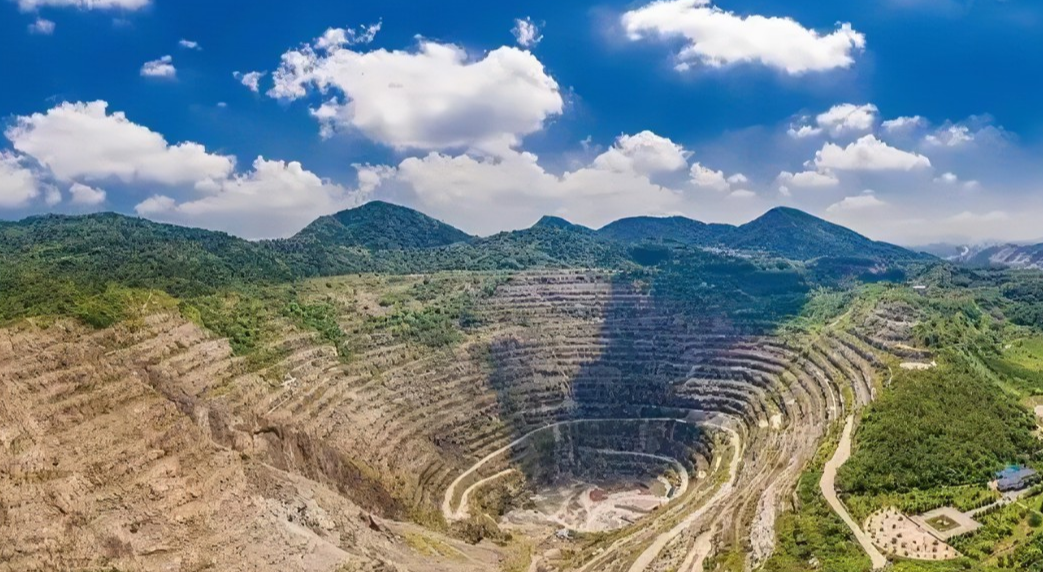Thinking on the construction and development of green mine in China in the new era

2.2 Green mine and green mining development demonstration zone construction requirements
In March 2017, the former Ministry of Land and Resources and other six ministries jointly issued the "Implementation Opinions on Accelerating the Construction of green mines" (Land Regulations (2017) No. 4), The green mine construction standards and the construction of green mining demonstration zones in 7 industries, including coal industry, oil and gas mining industry, non-ferrous metal industry, gold industry, metallurgy industry, chemical industry and non-metallic mining industry, have been clarified. According to the requirements, mining enterprises should strictly abide by the relevant laws and regulations of the state, in accordance with the mineral resources planning, industrial policies and basic conditions, and strive to achieve the construction requirements of five aspects: beautiful mining environment, environmentally friendly mining methods, economical and intensive comprehensive utilization of resources, intelligent and modern mining equipment management, and good social image. As a platform for mineral resource management system reform and innovation, the green mining development demonstration zone should exert its guiding role of the government, promote technological innovation, management innovation and system innovation, and concentrate on promoting the construction of green mines in the whole region. According to the six construction requirements of "optimizing the layout of exploration and development, promoting the restructuring of the mining industry, improving the overall efficiency of resource development and utilization, strengthening the protection and restoration of the geological environment of mines, actively exploring new ways of harmonious development of mines, and establishing a new mechanism for the development of green mining", by 2020, the construction of large and medium-sized mines in the demonstration zone will meet the requirements and standards for green mine construction. Complete the transformation and upgrading; Small-scale mines shall be managed in accordance with the requirements of green mine construction, so as to achieve the goal of reasonable layout and green mining.
2.3 China's green mine construction standards
According to the national green mine construction requirements, some local governments have successively formulated and introduced provincial construction standards and development requirements. According to incomplete statistics, Guangdong Province, Qinghai Province, Inner Mongolia Autonomous Region, Gansu Province and other provinces (autonomous regions), Xinzhou City in Shanxi Province, Huzhou city in Zhejiang Province, Yushu Prefecture in Qinghai Province, Haixi Prefecture and other cities (prefectures) have successively issued green mine construction standards or construction norms. In April 2018, the Ministry of Natural Resources publicized the green mine construction standards for non-metal, chemical, gold, coal, sand and gravel, petroleum, cement limestone, metallurgy, and non-ferrous industries, requiring mining enterprises to adhere to the law in the process of running mines on the basis of implementing the concept of innovative, coordinated, green, open, and shared development. Mining authorities and mining enterprises also need to jointly build enterprise construction norms in line with six aspects of mining environment, resource development mode, comprehensive utilization of resources, energy conservation and emission reduction, scientific and technological innovation and digital mining, enterprise management and corporate image. These nine national green mine construction standards provide a strong policy support and institutional guarantee for China's green mine construction, so that China's green mine construction has entered a new stage of institutionalization, standardization and standardization.

3 Green mine construction experience
3.1 Foreign green mine construction experience
Western developed countries regulate, restrict and limit the damage to the environment caused by mineral resource exploration and development through the formulation of laws and regulations, the improvement of government functions, the establishment of special funds, and the payment of environmental deposits. The Australian government promulgated the Environment and Biodiversity Protection Act (1999), carried out environmental assessment and approval of mining projects that may have a greater environmental impact, and established a "mine closure fund" by collecting mortgage funds from mining enterprises, which is specifically used for the dismantling of facilities, ecological restoration and enterprise transformation after the closure of mines. The state government of the United States requires the Geological Survey to take the protection of the geological environment and the prevention and control of geological disasters as its main responsibility, through the mining enterprises to submit the Environmental impact statement, solicit and collect opinions from the relevant government departments and the local government and the public of the mining area, and review the possible environmental impact of the mine development and the prevention and control measures. The Canadian federal and provincial governments require mining enterprises to propose closure plans before issuing mining licenses, and adopt cash payment, asset mortgage, letter of credit, insurance, bonds and legal person guarantees to ensure the implementation of mine closure and reclamation systems. The British government implements environmental protection on mineral resource development in three stages: access management, that is, permit access system; Supervision and management, namely IS014000 environmental management system certification, pollutant emission and noise management, environmental management of exploration and development projects, preparation and release of environmental annual reports, etc.; Land reclamation, that is, abandoned mine reclamation.
- EMERSON
- Honeywell
- CTI
- Rolls-Royce
- General Electric
- Woodward
- Yaskawa
- xYCOM
- Motorola
- Siemens
- Rockwell
- ABB
- B&R
- HIMA
- Construction site
- electricity
- Automobile market
- PLC
- DCS
- Motor drivers
- VSD
- Implications
- cement
- CO2
- CEM
- methane
- Artificial intelligence
- Titanic
- Solar energy
- Hydrogen fuel cell
- Hydrogen and fuel cells
- Hydrogen and oxygen fuel cells
- tyre
- Chemical fiber
- dynamo
- corpuscle
- Pulp and paper
- printing
- fossil
- FANUC
- Food and beverage
- Life science
- Sewage treatment
- Personal care
- electricity
- boats
- infrastructure
- Automobile industry
- metallurgy
- Nuclear power generation
- Geothermal power generation
- Water and wastewater
- Infrastructure construction
- Mine hazard
- steel
- papermaking
- Natural gas industry
- Infrastructure construction
- Power and energy
- Rubber and plastic
- Renewable energy
- pharmacy
- mining
- Plastic industry
- Schneider
- Kongsberg
- NI
- Wind energy
- International petroleum
- International new energy network
- gas
- WATLOW
- ProSoft
- SEW
- wind
- ADVANCED
- Reliance
- YOKOGAWA
- TRICONEX
- FOXBORO
- METSO
- MAN
- Advantest
- ADVANCED
- ALSTOM
- Control Wave
- AB
- AMAT
- STUDER
- KONGSBERG
- MOTOROLA
- DANAHER MOTION
- Bently
- Galil
- EATON
- MOLEX
- Triconex
- DEIF
- B&W
- ZYGO
- Aerotech
- DANFOSS
- KOLLMORGEN
- Beijer
- Endress+Hauser
- MOOG
- KB
- Moxa
- Rexroth
- YAMAHA
- Johnson
- Westinghouse
- WAGO
- TOSHIBA
- TEKTRONIX


Email:wang@kongjiangauto.com



































































































































